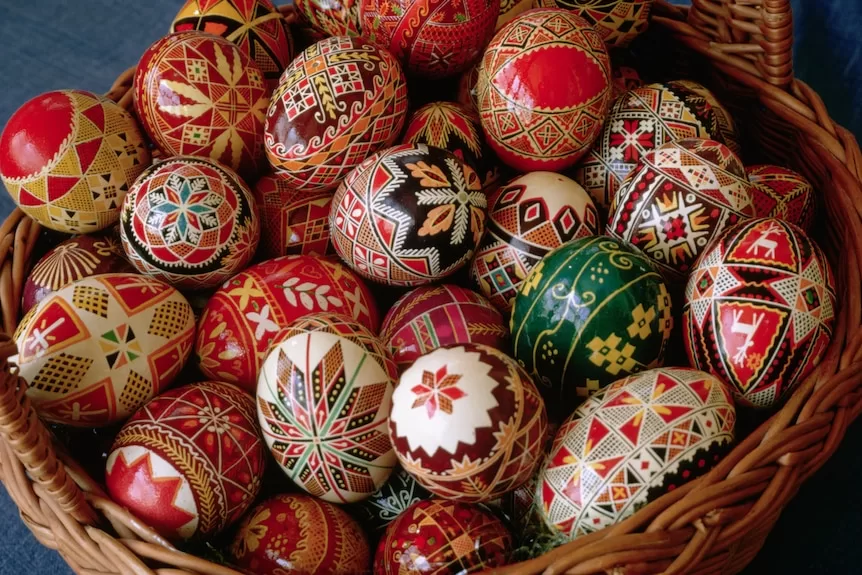For the more than half-a-million Australians who identify as Orthodox Christians, today is a significant day.
Sunday May 5 is Orthodox Easter, a date which falls more than a month after the more-widely recognised western Easter Sunday which is celebrated as a public holiday in Australia.
In both churches, Easter is considered the most important and holy occasion in the Christian calendar.
And while the date is different in each church, the fundamental meaning of Easter remains the same, centred around the crucifixion and resurrection of Jesus.
In the week before Easter, referred to as ‘Holy Week’ or ‘Pascha,’ Orthodox Christians are transcended through the milestones leading up to Jesus’ resurrection.
Here’s what Orthodox Easter typically looks like.
Why are there two dates for Easter?
The largest proportion of Orthodox communities in Australia come from central and eastern parts of Europe — including Greece, Ukraine, and Moldova.
Other Orthodox communities in Australia come from parts of the Middle East and Africa — with Coptic Orthodox Christians coming from Egypt, Assyrian Orthodox people from Iraq, and Eastern Orthodox people from Palestine.
Those who practice western Christian faiths, including Catholics and Protestants, typically mark Easter in late March or early April.
This year it fell on March 31.
How is the date for Easter decided on?
There are complex calculations used by Western and Orthodox churches to determine the date for Easter.
Orthodox Easter can fall anywhere between April 4 and May 8 each year, and for western Easter, this can occur between March 22 and April 25.
The common denominator is that both churches celebrate their Easter on the Sunday following the first full moon after the spring equinox.
This was determined in 325AD by the first major church council — the Council of Nicea — to codify the Christian faith.
However, differences in their calendars and astronomical factors means Easter does not always fall on the same date.
Orthodox Christians follow the Julian calendar, which was established by the Roman emperor Julius Caesar in 45BC.
The determination of the date is based on the solar cycle — in other words, the Earth’s revolutions around the sun.
Western Christians follow the Gregorian calendar, which was initially created by Pope Gregory XIII in 1582.
Established many years after the Julian calendar, the Gregorian was intended to correct some of the inaccuracies in the Julian calendar and better align with the Earth’s journey around the sun.
Mina Samy, a Lecturer in Liturgical Studies at St Cyrils Coptic Orthodox Theological College says there are inconsistencies with the calculations behind the Julian Calendar – as proven through modern technology.
“These approximations and calculations were very useful hundreds of years ago, but they are not anymore now that we have satellites and the internet,” Mr Samy said.
But he says celebrating Easter on a different date has created a kind of “identity” for Orthodox communities.
In rare instances, both Easter dates align between the two denominations.
For instance, both churches simultaneously celebrated Easter in 2014 and 2017 and the dates are expected to align again next year.
Will the churches ever decide on a common date?
The use of the different calendars also applies to Christmas, where Western churches celebrate the birth of Jesus on December 25, and Orthodox churches on January 7 each year.
The only difference is that the dates for Christmas are fixed, given its dependence on the lunar calendar.
At this stage, the Western and Orthodox churches have not reached an agreement on whether the dates for both celebrations will be changed.
However, there has been some recent movement.
Just last year, Ukraine changed the day they celebrate Christmas from January 7 to December 25, to distance the Ukrainian Orthodox church from the Russian Orthodox church.
The church also announced it would move to observe Easter at the same time as most Western countries – in a longing for unity.
In 2021, the Vatican said it would agree to set a common date for Easter, given other Christian churches are on board.
But at this point, it’s currently unclear whether, or when, both churches will agree to celebrate Easter on the same date after over a century of discourse.
How is Orthodox Easter celebrated differently?
In Jerusalem, thousands of worshippers typically celebrate the ceremony of the Holy Fire each year the Saturday before Easter, as calculated according to the Julian Calendar.
A Holy Fire, or flame, is lit at the Church of the Holy Sepulcher and is considered a miraculous spectacle of light and wonder — tracing back over a century.
Globally, after worshippers finish the midnight liturgy on Holy Saturday, joyful phrases are exchanged to mark the resurrection of Jesus.
In the Coptic and Greek Orthodox churches, one will say ‘Christos anesti’, which translates to ‘Christ is Risen’, followed by the response ‘Alithos anesti’, meaning ‘He is risen indeed’.
Across the globe, devotees finish off the season by joining their families for a feast, breaking their fast of up to 55-days where many abstain from meat and dairy by-products.
Natasha Nehme, a Syriac Orthodox Christian from the Middle East, said this was a very special period that prompted spiritual reflection and closeness.
“[It’s] such a nice spiritual journey throughout that month that really brings us close to our faith and leading up to Easter – it’s a celebration,” Ms Nehme said.
While many are familiar with chocolate eggs and hot cross buns – different Orthodox communities enjoy traditional dishes to mark the occasion.
Some Greek households exchange a different style of eggs that symbolise the renewal of life — hard boiled and dyed red in preparation for an egg-cracking competition.
Warak Aneb, or stuffed grape leaves, is the go-to for many Egyptian or Coptic Orthodox households.
“A lot of it’s meat-based, because of course, some people have abstained from eating meat, and all type of animal products.
“It’s definitely a big feast,” Ms Nehme said.
